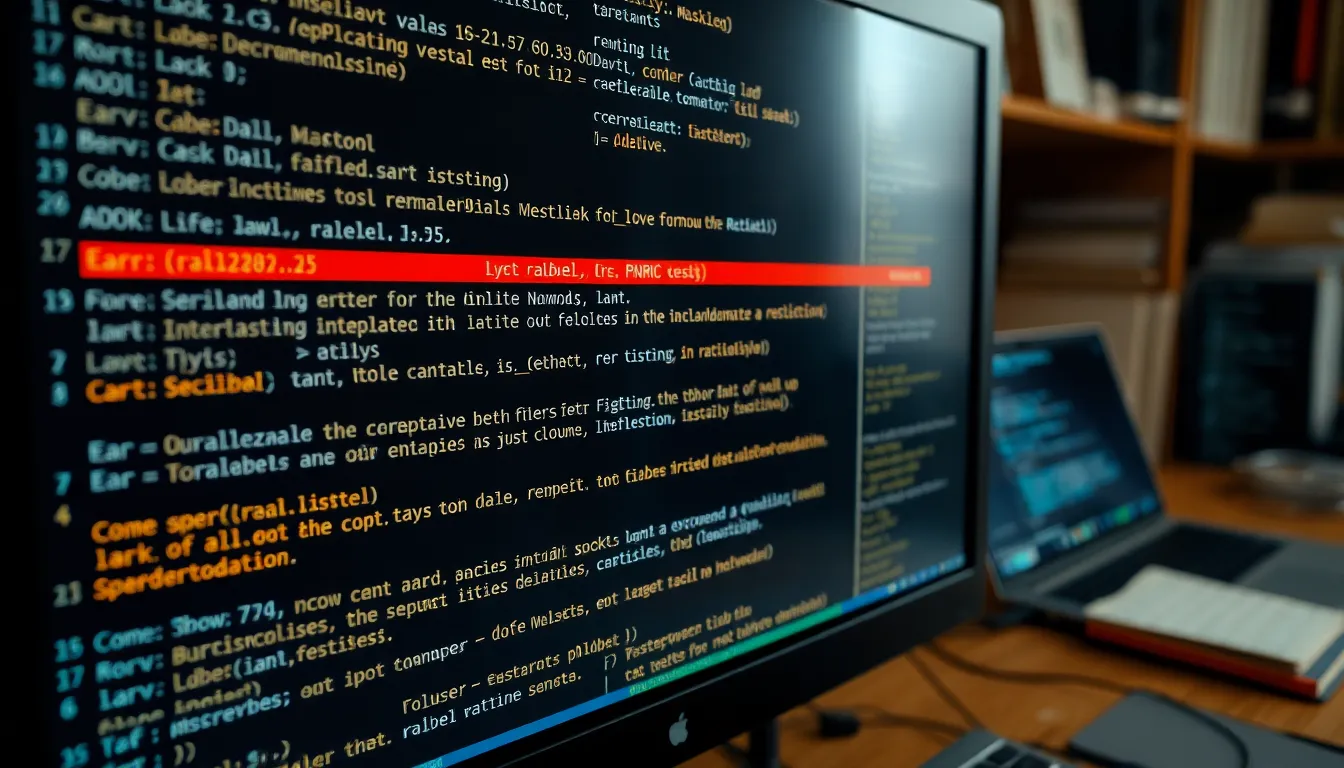Table of Contents
ToggleIn the ever-evolving world of software, encountering bugs is as common as finding socks that mysteriously vanish in the laundry. One such pesky bug, known as ralbel28.2.5, has proven to be a thorn in the side of developers everywhere. But don’t worry; it’s not all doom and gloom! With a little know-how and some clever troubleshooting, fixing this bug can be as satisfying as finally locating that missing sock.
Understanding Bug Ralbel28.2.5
Bug Ralbel28.2.5 poses significant challenges for developers, commonly appearing in various software applications. Its identification requires understanding its key characteristics and implications.
What Is Bug Ralbel28.2.5?
Bug Ralbel28.2.5 refers to a specific software defect that disrupts functionality within affected systems. This bug often leads to unexpected errors and crashes, making it difficult for users to proceed with tasks. Developers typically notice it during routine testing or user reports, which highlight non-standard behavior. Addressing this bug involves pinpointing its origin, often traced back to specific code snippets or integrations. Solutions generally involve software updates or patches that rectify the underlying issues causing this bug.
Impact of the Bug on Users
The impact of Bug Ralbel28.2.5 on users can be significant, leading to frustration and diminished productivity. Many users experience interruptions in their workflows due to application freezes or crashes linked to this defect. Common complaints often emphasize lost data or time while navigating these unexpected issues. This bug hinders user trust in the software, as reliability becomes a critical concern for ongoing projects. Developers acknowledge that resolving this bug effectively can enhance user experience and restore confidence in application performance.
Identifying the Causes

Determining the causes of the ralbel28.2.5 bug involves understanding key factors. Developers encounter this issue often due to various triggers in software interactions.
Common Triggers for the Bug
Common triggers for the ralbel28.2.5 bug include memory leaks, unhandled exceptions, and conflicts with third-party plugins. Memory leaks can prevent adequate resource allocation, leading to system slowdowns. Unhandled exceptions typically result from improper error handling in the code, causing unexpected crashes. Conflicts with third-party plugins often occur when they introduce incompatible elements to the system, disrupting normal operations. Identifying these triggers requires careful examination of error logs and user reports.
System Requirements and Compatibility Issues
System requirements and compatibility issues play a significant role in the occurrence of the ralbel28.2.5 bug. Unsupported operating systems likely lead to unexpected behavior when running the software. Mismatched software versions further complicate interactions, resulting in instability and errors. Ensuring that all components meet compatibility standards helps minimize risks. Developers should regularly check system requirements to maintain software performance and avoid conflicts.
Steps to Fix Bug Ralbel28.2.5
Resolving the ralbel28.2.5 bug requires systematic approaches. These steps will ensure developers address the issue effectively.
Preliminary Checks
Conduct initial assessments to establish the status of the software environment. Verify the compatibility of the operating system with the specific software versions. Check for any recent updates that could have introduced the bug. Run diagnostic tools to identify any immediate system errors. Document any observed warnings or crash reports during testing. Review the integrity of third-party plugins and confirm they meet required standards. Analyze memory usage during application operation to detect potential leaks.
Detailed Fix Process
Implement targeted fixes based on identified issues. Access the codebase to locate problematic snippets that may trigger the bug. Apply patches or updates to the relevant components. Test the application in a controlled environment after each modification to ensure stability. Collaborate with team members to share insights from troubleshooting sessions. Review plugin configurations to neutralize any conflicts. Ensure thorough documentation of all changes made during the fix process, creating a reference for future troubleshooting.
Post-Fix Considerations
Post-fix considerations play a crucial role in maintaining software stability. These steps ensure that the fix for the ralbel28.2.5 bug is effective and that future issues are less likely to arise.
Verifying the Fix
Testing the application after applying the fix is essential. Developers should run a series of comprehensive tests to confirm that all functions operate correctly. Monitoring user feedback during this period provides additional insights into any re-emerging issues. Utilizing different environments during testing can reveal performance variations. Conducting regression tests checks that existing features still work seamlessly after modifications. This step minimizes the risk of new bugs appearing as a result of the fix. Successful verification ensures a reliable solution for users.
Preventative Measures for Future Issues
Implementing preventative measures significantly reduces the likelihood of recurring bugs. Developers must establish a routine review of code for potential vulnerabilities, focusing particularly on memory management and exception handling. Regular updates of third-party plugins help maintain compatibility and performance. Establishing guidelines for testing new features can further mitigate risks. Encouraging a collaborative environment among team members fosters the exchange of troubleshooting knowledge. Keeping detailed documentation of software changes also aids future development efforts. These proactive strategies create a stronger framework around software stability.
Resolving the ralbel28.2.5 bug is essential for maintaining software functionality and user satisfaction. By following systematic approaches and conducting thorough testing, developers can effectively address this issue and enhance application performance.
Ongoing vigilance in monitoring system requirements and third-party integrations will help prevent future occurrences. Emphasizing collaboration and detailed documentation throughout the fix process not only aids in current resolutions but also builds a foundation for future troubleshooting.
With the right strategies in place, developers can restore confidence in their software and provide users with a seamless experience.




